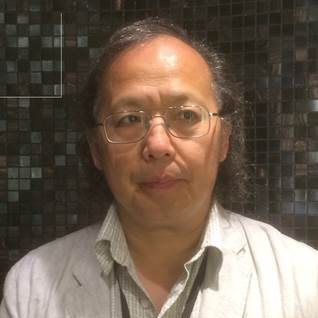Recent Advances in Mathematical Modeling of Energy-Based Tumor Ablation
A special issue of Applied Sciences (ISSN 2076-3417). This special issue belongs to the section "Biomedical Engineering".
Deadline for manuscript submissions: closed (20 October 2023) | Viewed by 5962
Special Issue Editors
Interests: energy-based tumor ablation; mathematical modeling; advanced medical devices
Interests: computational modelling; biomedical engineering; thermal ablation; cancer treatment
Special Issues, Collections and Topics in MDPI journals
Interests: design; manufacturing; MEMS; dynamic systems; biorobotics; biosensors; bioacutators
Special Issues, Collections and Topics in MDPI journals
Special Issue Information
Dear Colleagues,
Energy-based tumor ablation has become a critically alternative modality to treat tumors in various organs in clinics, and it has been developed into different modalities, such as radiofrequency ablation, microwave ablation, laser ablation, high-intensity focused ultrasound, cryoablation and irreversible electroporation. Mathematical modeling is an important tool in the field of tumor ablation for exploring the working principle of ablation with different modalities, designing novel protocols for different ablation modalities, predicating ablation outcome, etc. Furthermore, an accurate mathematical model can be used as a testbed, replacing in vivo experiments, which saves many resources (e.g., samples of animals, etc.). A mathematical model is also necessary for optimizing the treatment protocol. This Special Issue will aim to collecting papers, which represent the state of the art of mathematical modeling for energy-based tumor ablation applications and provide further perspectives of this subject. The topics of this Special Issue include, but are not limited to:
- Principal-based mathematical modeling;
- Empirical-based mathematical modeling;
- Data-driven mathematical modeling;
- Monte Carlo simulation;
- Molecular dynamics simulation;
- Novel mathematical modeling concepts and techniques;
- Mechanisms of tumor ablation with different modalities;
- Bioheat transfer;
- Design of novel treatment modalities;
- Cellular responses to electric fields;
- Molecular responses to electric fields;
- Mathematical modeling of tissues and anatomy.
Dr. Bing Zhang
Dr. Ean Hin Ooi
Prof. Dr. Wenjun (Chris) Zhang
Guest Editors
Manuscript Submission Information
Manuscripts should be submitted online at www.mdpi.com by registering and logging in to this website. Once you are registered, click here to go to the submission form. Manuscripts can be submitted until the deadline. All submissions that pass pre-check are peer-reviewed. Accepted papers will be published continuously in the journal (as soon as accepted) and will be listed together on the special issue website. Research articles, review articles as well as short communications are invited. For planned papers, a title and short abstract (about 100 words) can be sent to the Editorial Office for announcement on this website.
Submitted manuscripts should not have been published previously, nor be under consideration for publication elsewhere (except conference proceedings papers). All manuscripts are thoroughly refereed through a single-blind peer-review process. A guide for authors and other relevant information for submission of manuscripts is available on the Instructions for Authors page. Applied Sciences is an international peer-reviewed open access semimonthly journal published by MDPI.
Please visit the Instructions for Authors page before submitting a manuscript. The Article Processing Charge (APC) for publication in this open access journal is 2400 CHF (Swiss Francs). Submitted papers should be well formatted and use good English. Authors may use MDPI's English editing service prior to publication or during author revisions.
Keywords
- irreversible electroporation
- thermal ablation
- mathematical modeling
- data-driven modeling
- Monte Carlo simulation







